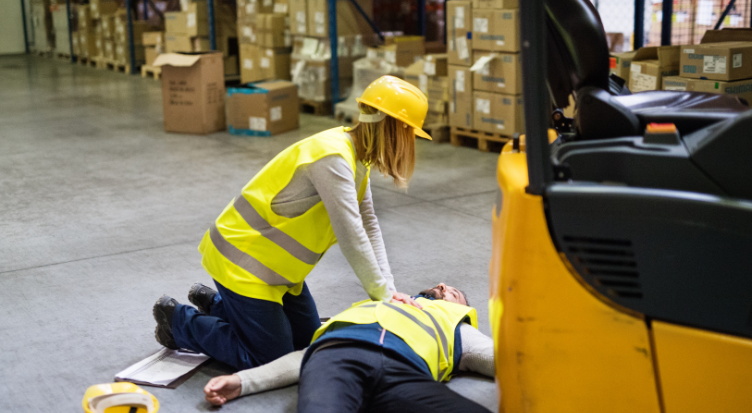

Workplace accidents can happen when we least expect them, regardless of the safety measures in place. Whether it’s a minor injury or a serious incident, knowing what to do right after a workplace accident is crucial. Quick action not only helps protect the injured person’s health but also ensures compliance with workplace safety regulations.
In this article, we’ll discuss the essential steps to take immediately after a workplace accident, your rights and responsibilities, and how organisations can prevent future incidents.
Understanding the Impact of a Workplace Accident
A workplace accident refers to any unplanned event that causes injury, illness, or damage in the work environment. These accidents may include slips and falls, machinery-related injuries, repetitive strain injuries, or even chemical exposure.
The impact of a workplace accident goes beyond physical harm. It can affect mental well-being, workplace productivity, and even the reputation of the business. This is why both employers and employees need to understand their roles in managing such incidents.
Step 1: Ensure Safety First
The first and most important step after a workplace accident is to secure the area and prevent further harm. If the environment is still unsafe for example, due to exposed wires, chemical spills, or heavy machinery remove people from the area immediately.
Employers should have clear workplace health and safety procedures in place to guide staff during emergencies. This step ensures that injuries don’t escalate and others aren’t put at risk.
Step 2: Provide First Aid and Medical Attention
Once the area is safe, administer first aid to the injured person. Every workplace should have a trained first-aid officer and easily accessible first-aid kits. Depending on the severity of the injury, professional medical help may be required.
For serious injuries, call emergency services without delay. Even if an injury appears minor, it’s wise to seek medical evaluation to document the incident and avoid complications later.
Step 3: Report the Workplace Accident
Reporting is a legal and practical requirement. Employees must notify their supervisor or manager immediately after a workplace accident. Employers are then responsible for recording the details and, if necessary, reporting to regulatory bodies such as Safe Work Australia.
Accurate reporting helps in:
- Ensuring proper medical support
- Initiating workers’ compensation claims
- Creating safer workplace practices in the future
Step 4: Document the Incident
Documentation is a key step often overlooked after a workplace accident. Employers should gather witness statements, take photographs, and prepare an incident report. Employees should also keep their own record of events, including medical assessments and time lost from work.
This documentation serves as valuable evidence if compensation claims or legal issues arise later.
.png)
Step 5: File for Workers’ Compensation
In Australia, employees injured in a workplace accident may be eligible for workers’ compensation. This provides financial support for medical expenses, lost wages, and rehabilitation.
To start the process, employees should:
- Report the incident promptly
- Provide medical certificates
- Submit the workers’ compensation claim form
Employers should guide employees through this process to ensure their rights are protected.
Step 6: Investigate and Prevent Future Accidents
After managing the immediate aftermath, the next focus should be on prevention. Employers must investigate the root cause of the workplace accident. Was it due to faulty equipment, lack of training, or poor safety measures?
Addressing these issues can prevent similar accidents in the future. Employers should also update safety protocols, provide refresher training, and ensure compliance with occupational health and safety laws.
Employee Rights and Employer Responsibilities
Both parties play an important role in workplace accident management.
- Employee rights: Safe working conditions, access to medical care, workers’ compensation, and protection from discrimination when reporting injuries.
- Employer responsibilities: Maintaining a safe workplace, providing proper training, reporting accidents, and supporting injured workers throughout recovery.
By working together, both employers and employees can create a safer and more supportive workplace culture.
Conclusion
Knowing what to do immediately after a workplace accident can make all the difference. From ensuring safety and seeking medical attention to reporting and documenting the incident, each step is vital. Employees should be aware of their rights, while employers must uphold their responsibilities to ensure compliance and safety.
A proactive approach not only helps manage workplace accidents effectively but also builds a culture of trust, safety, and accountability.
For businesses looking to strengthen workplace safety and compliance, professional support can help reduce risks and create a healthier working environment. With IMAUS you can explore solutions that protect both employees and employers.

Providing the Best Solutions with Our Injury Management Consultants
Contact us today to make an appointment or to learn more about our services. We're here to help.
.png)

